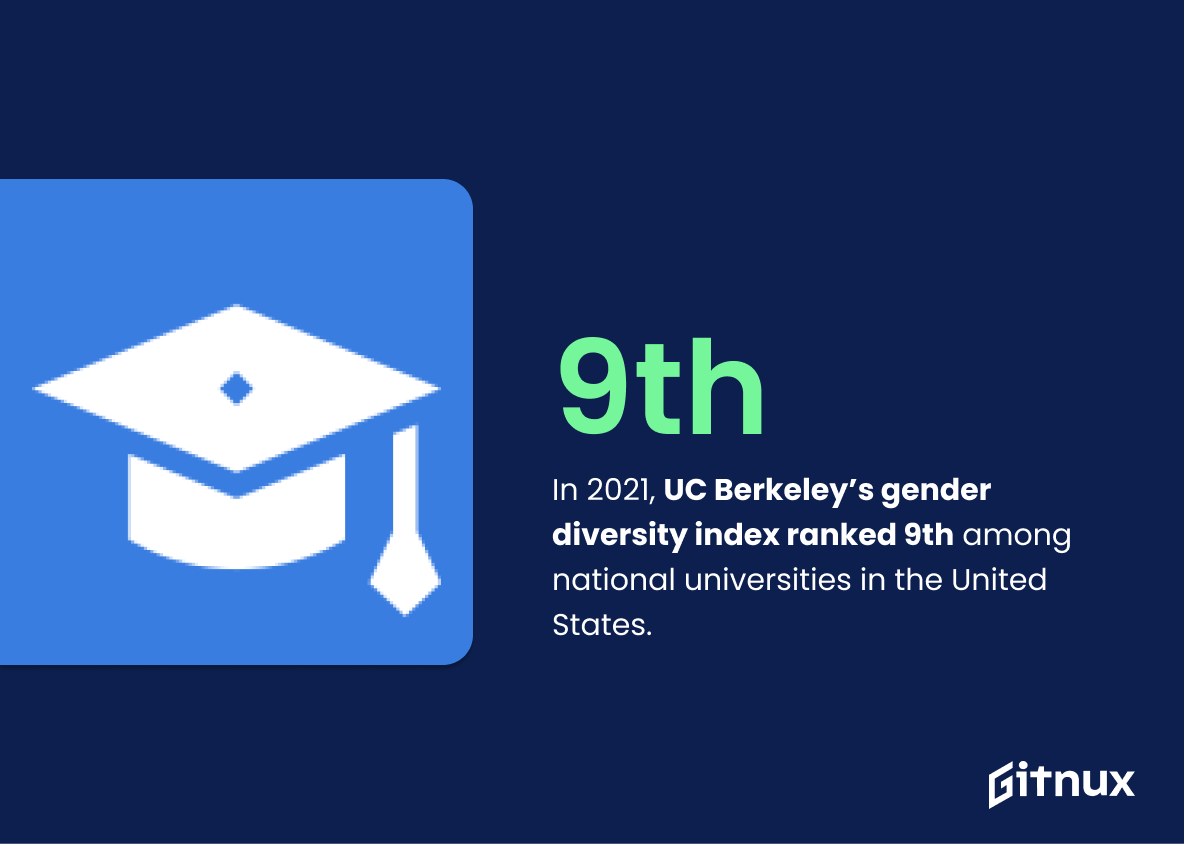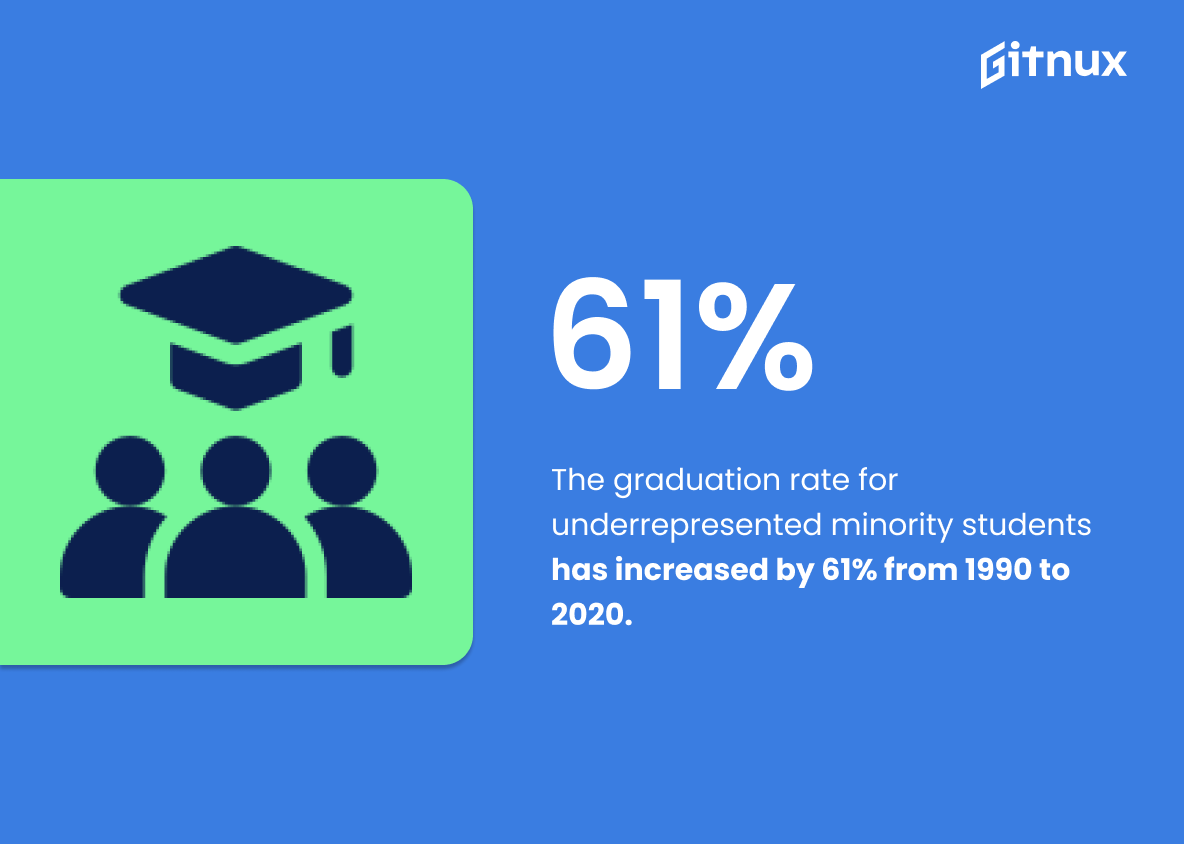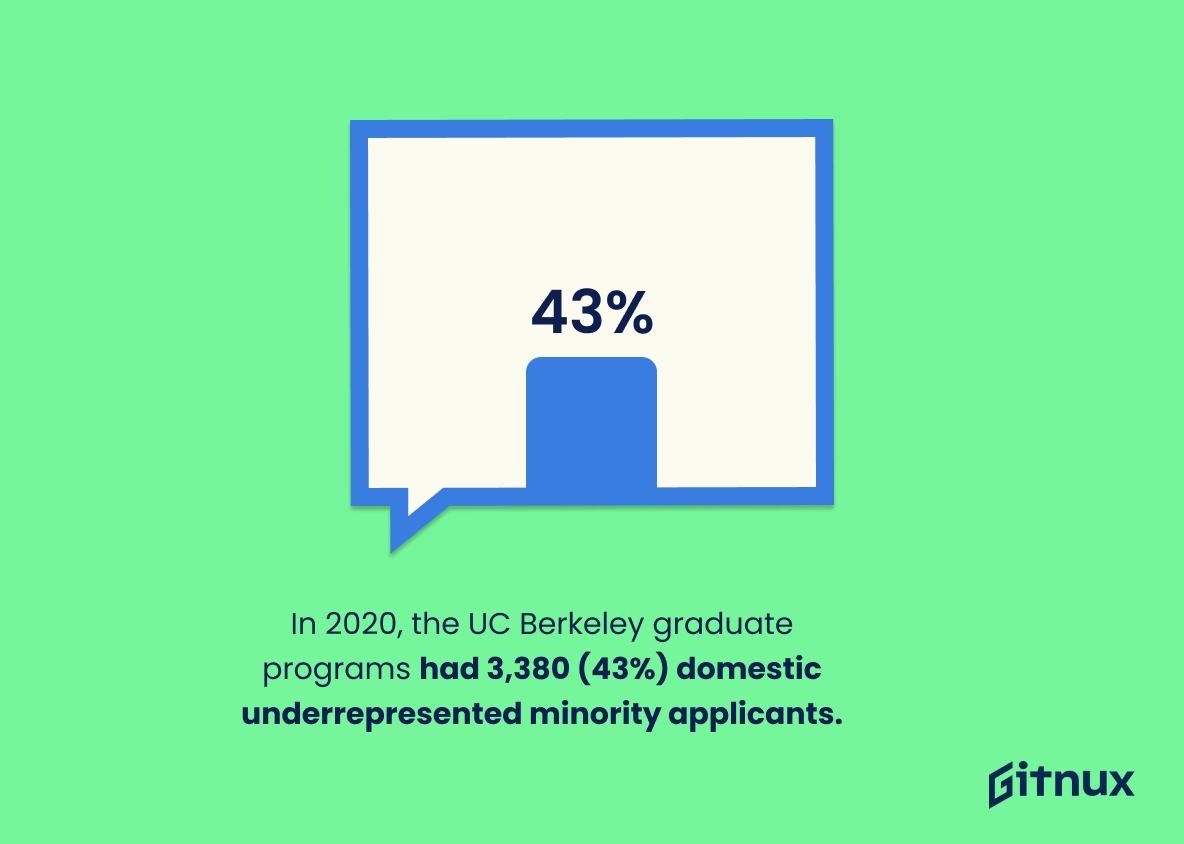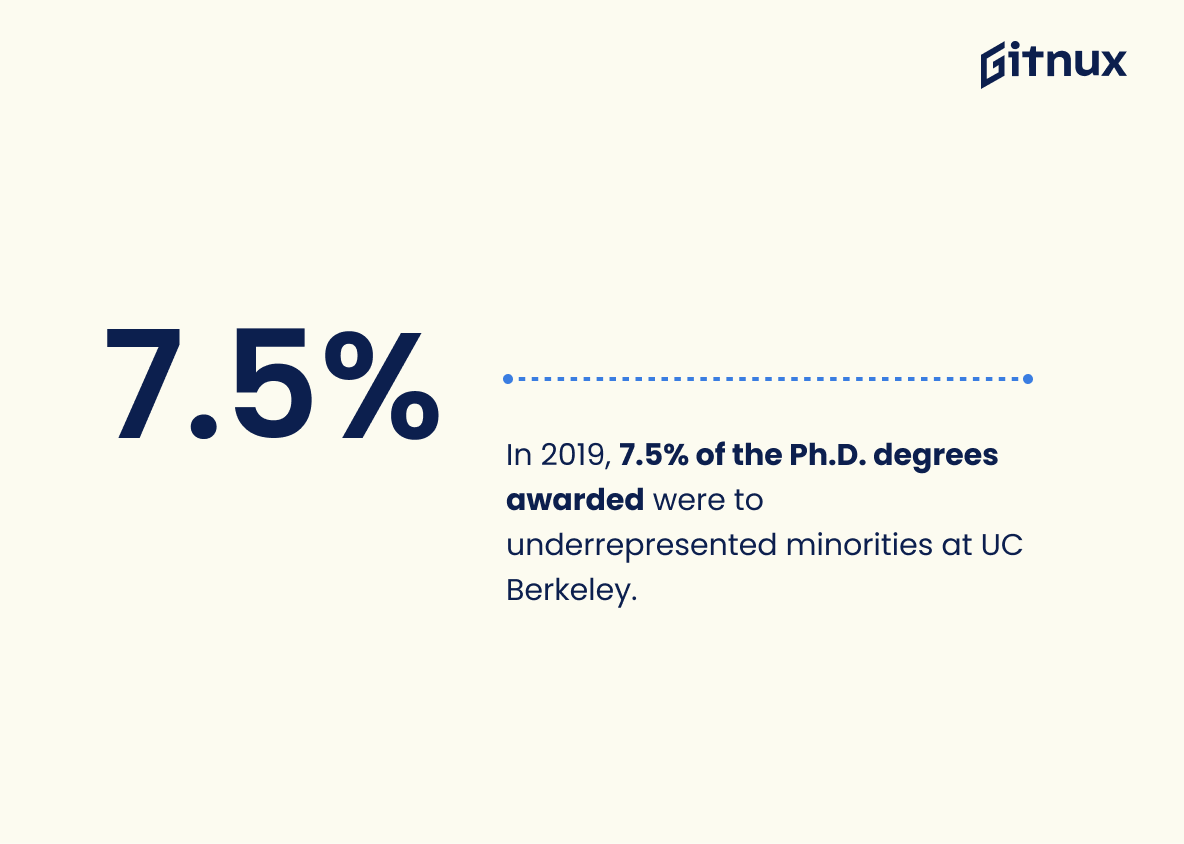UC Berkeley has long been a leader in promoting diversity and inclusion on campus. With an undergraduate enrollment of 30,402 students, 53% identifying as female and 47% as male, UC Berkeley ranked 8th for the Best College for Ethnic Diversity according to US News in 2021. The university’s undergraduate population is made up of 42.2% Asian, 19.7% White, 4.4% Black, and 21% Hispanic students as of 2020; 25.7%, 18.1%, 13%, 9
This statistic is a testament to the diversity of UC Berkeley’s undergraduate population, with a near-even split between male and female students. It speaks to the university’s commitment to providing an inclusive and equitable learning environment for all students.
UC Berkeley’s undergraduate population is made up of 42.2% Asian, 19.7% White, 4.4% Black, and 21% Hispanic students as of 2020.
This statistic is a powerful reminder of the diversity that exists at UC Berkeley. It highlights the fact that the university is home to a wide range of ethnicities and backgrounds, and that it is committed to providing an inclusive and equitable learning environment for all students. This statistic is a testament to Berkeley’s commitment to fostering a diverse and vibrant campus community.
Berkeley Diversity Statistics Overview
In 2021, UC Berkeley’s gender diversity index ranked 9th among national universities in the United States.
This statistic is a testament to the commitment UC Berkeley has made to fostering a diverse and inclusive campus. It demonstrates that the university is actively working to create an environment where all students, regardless of gender, can feel safe and respected. This ranking is a reflection of the university’s dedication to creating a campus that is welcoming to all.
As of 2020, 13% of UC Berkeley’s undergraduate students are first-generation college students.
This statistic is a testament to the commitment of UC Berkeley to providing access to higher education for all, regardless of their background. It speaks to the university’s dedication to creating an inclusive and diverse campus, where students from all walks of life can come together to learn and grow. It also highlights the importance of providing support and resources to first-generation college students, who may face unique challenges in navigating the college experience.
UC Berkeley ranked 26th among 1,715 colleges for overall diversity in 2021 according to College Factual.
The fact that UC Berkeley has been ranked 26th among 1,715 colleges for overall diversity in 2021 by College Factual is a testament to the university’s commitment to creating an inclusive and equitable environment. This ranking is a reflection of the university’s dedication to fostering a diverse and vibrant campus community, and it serves as a reminder of the importance of diversity in higher education.
In fall 2019, UC Berkeley enrolled 8,948 students from countries outside the United States.
This statistic speaks volumes about the international presence at UC Berkeley. It demonstrates the university’s commitment to fostering a diverse and inclusive environment, one that welcomes students from all over the world. This statistic is a testament to the university’s dedication to providing a global education experience, one that allows students to learn from and interact with people from different cultures and backgrounds.
As of 2021, UC Berkeley has 13 cultural and identity centers offering resources to support various communities on campus.
The fact that UC Berkeley has 13 cultural and identity centers speaks volumes about the university’s commitment to fostering a diverse and inclusive campus. These centers provide invaluable resources to support various communities on campus, helping to create a safe and welcoming environment for all students. This statistic is a testament to Berkeley’s dedication to promoting diversity and inclusion, and is an important part of understanding the university’s overall commitment to diversity.
The graduation rate for underrepresented minority students has increased by 61% from 1990 to 2020.
This statistic is a testament to the progress Berkeley has made in promoting diversity and inclusion on campus. The 61% increase in graduation rate for underrepresented minority students is a clear indication that Berkeley is taking steps to ensure that all students have the same opportunities to succeed. This is an important milestone in Berkeley’s commitment to creating a more equitable and diverse learning environment.
In 2020, the UC Berkeley graduate programs had 3,380 (43%) domestic underrepresented minority applicants.
This statistic is a testament to the success of UC Berkeley’s commitment to diversity and inclusion. It shows that the university is actively working to create an environment that is welcoming and supportive of underrepresented minorities. This is an important step in creating a more equitable and just society, and it is encouraging to see that Berkeley is taking the lead in this effort.
In 2019, 7.5% of the Ph.D. degrees awarded were to underrepresented minorities at UC Berkeley.
This statistic is a testament to the progress UC Berkeley has made in promoting diversity and inclusion. It shows that the university is taking steps to ensure that underrepresented minorities are given the same opportunities as everyone else to pursue higher education. This statistic is a positive sign that UC Berkeley is making strides towards creating a more equitable and diverse campus.
In 2021, the University of California, Berkeley College of Engineering was ranked 2nd in the nation for diversity.
The University of California, Berkeley College of Engineering’s ranking of 2nd in the nation for diversity in 2021 is a testament to the college’s commitment to creating an inclusive and equitable environment. This statistic is a reflection of the college’s dedication to providing a safe and welcoming space for students of all backgrounds, and it serves as a reminder of the importance of diversity in higher education.
Conclusion
UC Berkeley is a diverse and inclusive university that strives to create an equitable learning environment for all students. With 53% of its undergraduate population identifying as female, 47% male, 42.2% Asian, 19.7% White, 4.4% Black and 21 % Hispanic students in 2020; UC Berkeley has achieved impressive diversity statistics across gender identity, ethnicity and race among both faculty members (61.4%, 18.7%, 8.8%, 3 .3%) and staff (44 .1%, 25 .5%, 16 % , 8 .9%). Additionally the college also ranks highly for economic diversity with 26 % of their student body receiving need-based Pell Grants in 2021 while 13 % are first generation college goers from low income backgrounds(36 .6%) or middle income backgrounds(46 .1%). The University’s commitment to fostering a culture of inclusion is further demonstrated by the presence of 13 cultural centers on campus offering resources to support various communities along with 100 percent U S citizen representation on NCAA teams rosters including 1 percent African American athletes & 3 percent Asian Americans athletes respectively in 2021 Furthermore UC Berkeley was ranked 2nd nationally for overall diversity according to College Factual & 181st economically making it one of the most diverse universities nationwide today.
References
0. – https://www.opa.berkeley.edu
1. – https://www.diversity.berkeley.edu
2. – https://www.collegefactual.com
3. – https://www.datausa.io









